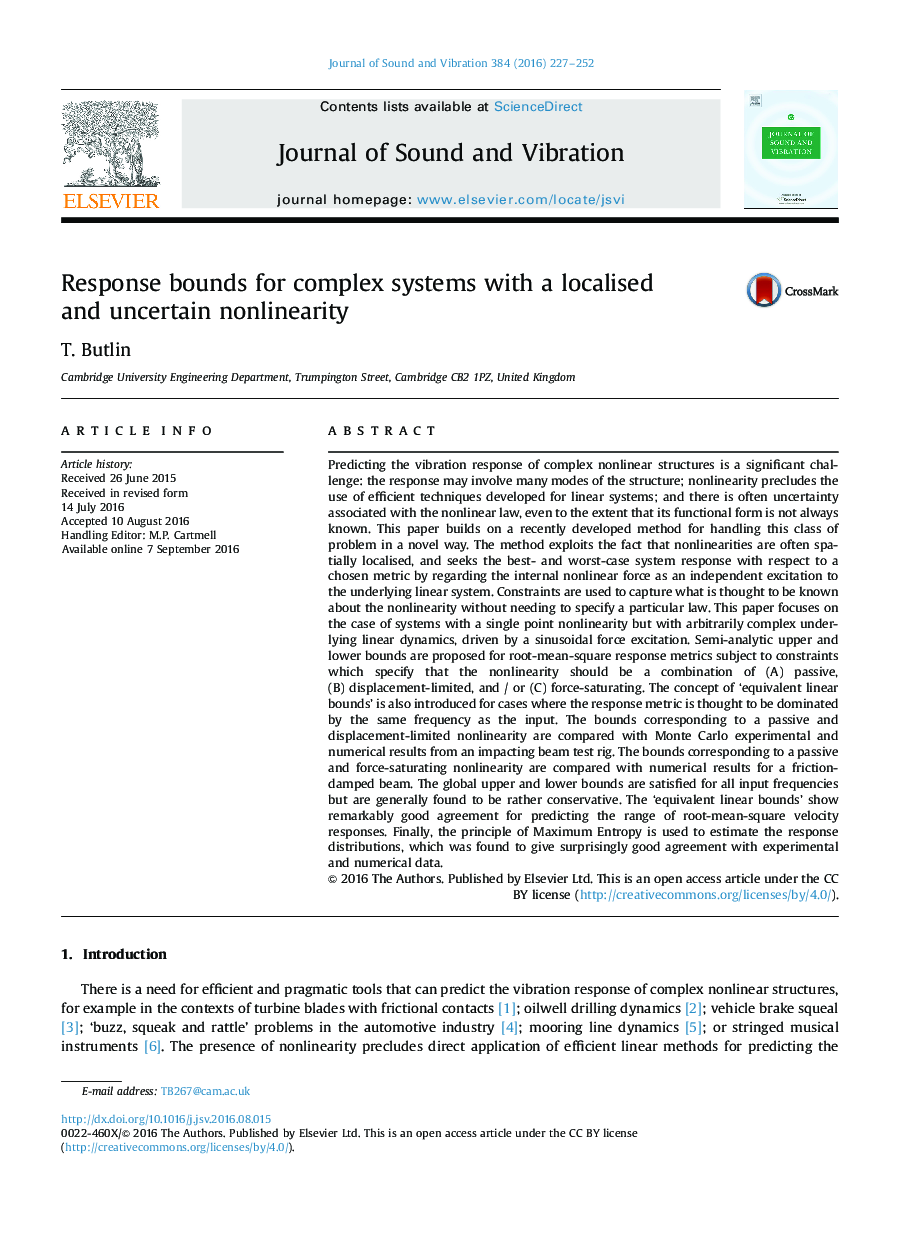| کد مقاله | کد نشریه | سال انتشار | مقاله انگلیسی | نسخه تمام متن |
|---|---|---|---|---|
| 4924528 | 1430849 | 2016 | 26 صفحه PDF | دانلود رایگان |
- Anti-optimisation is applied to modelling nonlinear vibration with uncertainties.
- Semi-analytic global upper and lower response bounds are proposed.
- Linear bounds are derived when the response is dominated by the input frequency.
- Bounds are compared with Monte Carlo experimental and simulation test results.
- Maximum entropy is used to estimate the response distribution.
Predicting the vibration response of complex nonlinear structures is a significant challenge: the response may involve many modes of the structure; nonlinearity precludes the use of efficient techniques developed for linear systems; and there is often uncertainty associated with the nonlinear law, even to the extent that its functional form is not always known. This paper builds on a recently developed method for handling this class of problem in a novel way. The method exploits the fact that nonlinearities are often spatially localised, and seeks the best- and worst-case system response with respect to a chosen metric by regarding the internal nonlinear force as an independent excitation to the underlying linear system. Constraints are used to capture what is thought to be known about the nonlinearity without needing to specify a particular law. This paper focuses on the case of systems with a single point nonlinearity but with arbitrarily complex underlying linear dynamics, driven by a sinusoidal force excitation. Semi-analytic upper and lower bounds are proposed for root-mean-square response metrics subject to constraints which specify that the nonlinearity should be a combination of (A) passive, (B) displacement-limited, and / or (C) force-saturating. The concept of 'equivalent linear bounds' is also introduced for cases where the response metric is thought to be dominated by the same frequency as the input. The bounds corresponding to a passive and displacement-limited nonlinearity are compared with Monte Carlo experimental and numerical results from an impacting beam test rig. The bounds corresponding to a passive and force-saturating nonlinearity are compared with numerical results for a friction-damped beam. The global upper and lower bounds are satisfied for all input frequencies but are generally found to be rather conservative. The 'equivalent linear bounds' show remarkably good agreement for predicting the range of root-mean-square velocity responses. Finally, the principle of Maximum Entropy is used to estimate the response distributions, which was found to give surprisingly good agreement with experimental and numerical data.
Journal: Journal of Sound and Vibration - Volume 384, 8 December 2016, Pages 227-252
